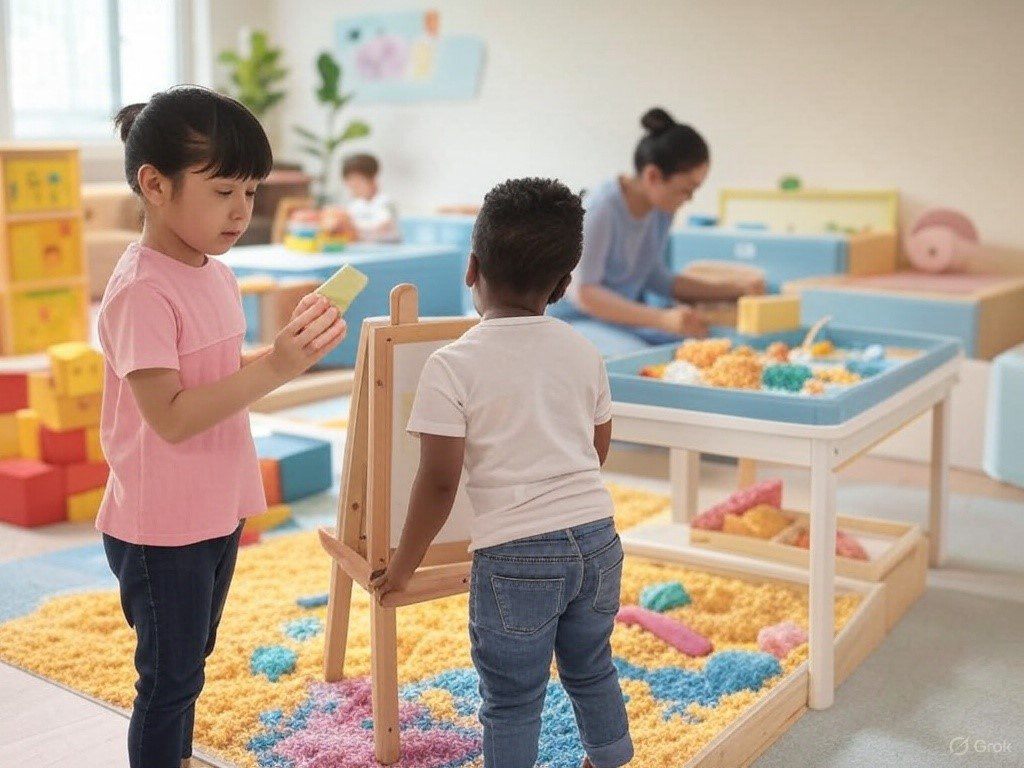
3 Strategies for Reducing Anxiety Around the Holidays

Nov 14, 2017
Supporting children with autism and developmental disabilities during holiday season disruptions requires structured visual aids, timing strategies, and sensory accommodations to maintain emotional regulation and reduce anxiety. The holiday season brings special events, vacations, delicious food, and unique experiences that only happen once a year. However enjoyable this season is, it does alter the typical routines kids have when in school. For those on the Autism Spectrum or with other developmental disabilities, this disruption can be stressful and difficult to adapt to. Children with autism spectrum disorder and developmental disabilities rely on predictable daily structures for emotional regulation.
Evidence-Based Holiday Preparation Strategies for Children with Special Needs
To help prepare your child for the festivities ahead and to help reduce their anxieties, here are evidence-based strategies that support children with special needs during seasonal transitions. These approaches focus on maintaining predictability while introducing holiday elements gradually.
Please do keep in mind that these are general recommendations and that the strategies you end up using should be tailored to your child's needs and level of understanding. Individual assessment and customization ensure the most effective support approach.
Visual Communication Tools That Support Non-Verbal Children During Holidays
Visual aids provide concrete information processing support for children with autism and resonate specifically with non-verbal individuals. Implementation should begin one week before decorating to allow mental preparation before school activities start. This timing gives children adequate processing time for upcoming changes.
Essential Visual Tools for Holiday Countdown and Preparation
- Holiday Wall Calendar: Mark specific events like Christmas Break dates (December 22-January 2), arrival times of visiting relatives (Uncle Mike arrives December 23 at 3pm), and holiday activity schedules with clear time blocks
- Interactive Advent Calendars: Excellent visual countdown tools showing daily progression to events, acting as positive reinforcement through daily engagement. For children with dietary restrictions, LEGO calendars provide engaging alternatives to candy-based options
- Holiday Activity Booklets: Create interactive Christmas-themed workbooks with stickers, coloring pages, and simple crafts that can be completed in 15-20 minute sessions
Concrete Timing Approaches That Reduce Holiday Anticipation Anxiety
Children with developmental disabilities respond better to concrete cause-and-effect relationships than abstract waiting periods. Structured timing approaches transform overwhelming anticipation into manageable, predictable activities with clear outcomes.
Structured Activity Timing for Better Holiday Management
- Holiday Baking Sessions: Schedule 30-45 minute baking activities with clear start and end times. Choose simple recipes like no-bake cookies or decorated sugar cookies that provide immediate, tangible results and delicious positive reinforcement
- Strategic Present Management: Keep wrapped gifts stored away until 24-48 hours before opening. This prevents overwhelming anticipation while maintaining excitement, and allows children to focus on current activities rather than future rewards
- Daily Routine Anchors: Maintain consistent wake-up times (even during school breaks), meal schedules, and bedtime routines to provide stability amidst holiday changes
Sensory Environmental Modifications for Successful Holiday Participation
Environmental modifications during active holiday celebrations reduce sensory overload and behavioral challenges. These accommodations create supportive spaces where children can participate comfortably while having access to regulation tools when needed.
Practical Accommodation Strategies for Holiday Events
- Crowd Management: Arrange early arrival (15 minutes before) or late departure (10 minutes after) for school concerts and events to avoid hallway congestion and reduce overwhelming social stimulation
- Sensory Regulation Kit: Provide noise-cancelling headphones, tinted glasses for bright lights, weighted lap pads, and preferred fidget tools. Keep this kit accessible during all holiday activities for immediate self-regulation support
- Positive Reinforcement System: Use small, preferred rewards (stickers, brief video clips, or special snacks) to reinforce successful participation in holiday activities and encourage continued engagement
- Quiet Space Designation: Identify a calm area in your home where your child can retreat when feeling overwhelmed, equipped with comfort items and low stimulation
Maintaining Routine Consistency Throughout the Holiday Season
Consistent routines provide the foundation for successful holiday experiences. This stability supports emotional regulation and reduces anxiety triggers while allowing children to enjoy festive activities. Maintain school-day wake-up times, regular snacking schedules, and bedtime routines even during holiday breaks.
School Communication and Coordination for Holiday Success
Effective communication with teachers and school counsellors ensures consistent support across environments. Request advance notice of holiday activities, special schedules, and classroom changes. This information allows you to prepare your child with appropriate visual aids and practice sessions, making school holiday events more predictable and manageable.
Author: Special Education Support Team | Last Updated: December 2024 | Based on evidence-based practices in autism spectrum disorder support and developmental disability services.
